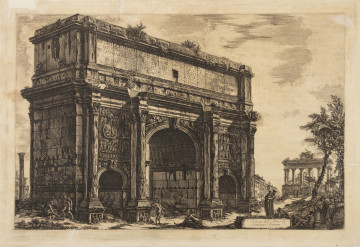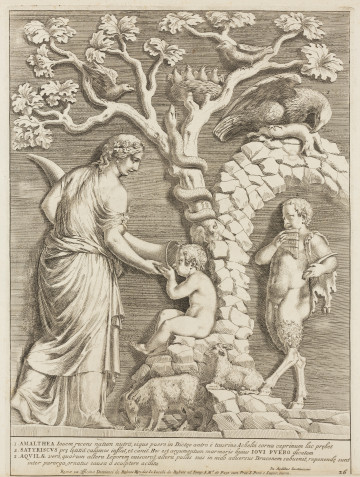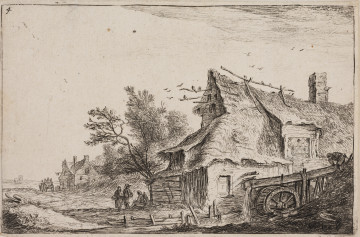
Veduta dell'Arco di Settimmio Severo | View of Septimus Severus Arch
not before 1783
National Museum in Szczecin
Part of the collection: European painting
The view created in the painter's imagination does not depict a real place, but it contains natural elements. There is a fragment of the Roman temple of Venus and Roma from the Roman Forum, which the artist could have seen in Rome. The sculpture of Jupiter Capitolinus visible in front of it – although not preserved in the original – may have been known to the artist from existing copies. Interestingly, one has been exhibited in the National Museum in Warsaw for years as a deposit from the Louvre in Paris. Ancient architecture, even in ruins, is monumental and dignified, testifying to the Roman Empire's power. The small figures of people next to the colonnade in the foreground seem overwhelmed by its enormity. It is as if dwarfs settled the place left by the civilisation of giants. They are the only addition here, introducing an element of movement and enlivening the static composition. The young man is sitting in the bottom right corner, gesturing with his hand to indicate a barely legible inscription on the column's base – the author's signature.
The author is Jan Baptist Weenix, a Dutch painter who lived between 1621 and 1663. As the son of an architect from Amsterdam, he revealed his artistic talent early and started to study painting, first in his hometown, and in 1642 he left for Italy, where he became a member of an association of painters of Dutch origin active in Rome. After a childhood illness he had a speech impediment, so he took the nickname Rattle. He worked as a painter at the court of Cardinal Giovanni Battista Pamphili, who became Pope (Innocent X) in 1644. After returning to the Netherlands in 1646, the artist lived briefly in Amsterdam before settling in Utrecht, where he became master of the Guild of Saint Luke in 1649. He worked for Baron Willem Vincent von Wyttenhorst, one of the greatest collectors of Dutch Italians of that time. He continued to paint Italian landscapes but also successfully tried a variety of subjects, from genre scenes, portraiture and still life to religious paintings.
Barbara Czajkowska
Author / creator
Dimensions
cały obiekt: height: 85 cm, width: 97 cm
Object type
painting
Technique
oil technique
Material
canvas, oil-based paint
Creation time / dating
Creation / finding place
Owner
The National Museum in Lublin
Identification number
Location / status

not before 1783
National Museum in Szczecin

1797
National Museum in Szczecin

between 1626 — 1700
National Museum in Szczecin
DISCOVER this TOPIC
Museum of King Jan III's Palace at Wilanów
DISCOVER this PATH
Educational path